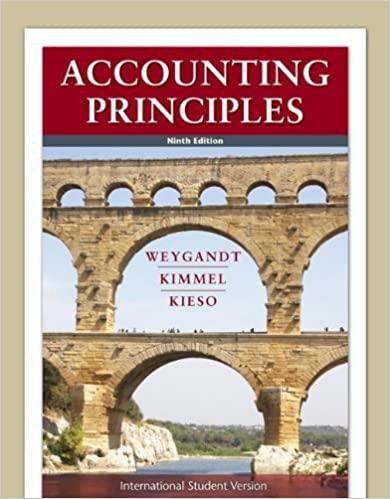Question
Alexander J. Bigshot, is an extremely successful real estate developer. He owns most of his holdings through an S corp., Bigshot, Inc., that he formed
Alexander J. Bigshot, is an extremely successful real estate developer. He owns most of his holdings through an S corp., Bigshot, Inc., that he formed in 2016. (You advised him not to put his investments into corporate solution, but he disregarded your advice and said you were a loser for making the suggestion.) In 2016, Mr. Bigshot invested $100 million of cash in Bigshot, Inc. in exchange for 100% of Bigshots stock. Bigshot, Inc. invested $75 million of cash as a down payment to purchase a number of real estate rental properties in 2016. Bigshot, Inc. was able to leverage its investment as it borrowed $300 million of qualified nonrecourse financing to acquire the properties. In 2016, Bigshot, Inc. also invested $25 million of cash into Subprime Lender, LLC. Subprime Lender is a mortgage lender specializing in making home mortgage loans to customers who have low FICO scores. 70% of Subprime Lender LLCs profit and loss is allocable to the managing member who participates in the decisions involving running the business. Mr. Bigshot spends approximately 1,800 hours per year actively managing the rental properties owned by Bigshot, Inc. His management activities include direct oversight of the management company, making decisions on the day to day operations of the properties, including repair costs, approving tenants, developing a marketing strategy, etc. He visits each property once or twice a month. He spends another 20 hours per year overseeing Bigshot Inc.s. Subprime Lender investment, reviewing financial statements, and discussing the overall performance with his investment advisors. In 2016 Mr. Bigshot elected under Reg. 1.469-9(g) (the grouping election) to treat all interests in rental real estate as a single rental real estate activity for the material participation tests of Temp. Reg. 1.469 5T. In 2016 Bigshot, Inc. incurred huge losses. Its rental activities generated an ordinary loss of $110 million. Subprime Lender sent Bigshot, Inc. a Schedule K-1 showing $20 million of ordinary losses from its trade or business of lending. Mr. Bigshot had $100,000,000 million of income from interest, dividends and stock sales in 2016,
Part 1
It is now December 2017 and Mr. Bigshot has asked you to prepare a year-end tax projection. The following summarizes the information you have been provided for 2017. During 2017, the hours worked by Mr. Bigshot, were comparable to those of 2016. Mr. Bigshot made no capital contributions to Bigshot, Inc. Mr. Bigshot did not receive any distributions from Bigshot, Inc. The rental properties owned by Bigshot, Inc. generated an ordinary loss of $50 million, which was financed through an additional bank loan from a qualified lender that is affiliated with and controlled by a wealthy individual. Neither the lender nor the wealthy individual are related parties to Mr. Bigshotthey are just good friends. The loan is collateralized by the properties. Subprime Lender has advised Mr. Bigshot that it is having a great year and it expects to generate $3 billion of taxable income during 2017. Bigshot Inc.s distributive share of that income is expected to be $30 million. Mr. Bigshot received $ 50 million of portfolio income during 2017. All of this income was interest income. Assume that all of Mr. Bigshots taxable income is subject to tax at a 40% rate. Ignore itemized deductions, standard deductions, etc. In other words, compute his tax by applying a 40% rate to taxable income. How much tax should Mr. Bigshot expect to owe for 2017?
Part 2
It is now August 2018 and you are completing the 2017 returns for Bigshot, Inc. and Mr. Bigshot. Mr. Bigshot has just provided you with the actual 2017 Schedule K-1 that he received from Subprime Lender, LLC. After Subprime Lender prepared its year-end tax estimates, its independent auditors required that the company make substantial adjustments reducing income. It turns out that they did not have the profitable year that they were expecting, and the actual Schedule K-1 sent to Bigshot Corp. shows an ordinary loss of $10 million. The Schedule K-1 shows that Bigshot Corp. was allocated nonrecourse debt of $5 million. Mr. Bigshot said Believe me this is terrificbecause, instead of reporting $30 million of income, I will report a loss of $10 million saving me a lot of money. It will be really beautiful to receive that tax refund. Mr. Bigshot is so confident that he will get a large refund of the tax he paid in December 2017 that he has booked a luxurious Mediterranean vacation on a private yacht. The yacht he is renting is exceptionally large so that he can impress all of the people in Monaco when he sails into the harbor at Monte Carlo. He plans to use the tax refund to pay for the vacation. All other information used in the year-end projection remains unchanged. What is Mr. Bigshots actual 2017 tax liability?
Step by Step Solution
There are 3 Steps involved in it
Step: 1

Get Instant Access to Expert-Tailored Solutions
See step-by-step solutions with expert insights and AI powered tools for academic success
Step: 2

Step: 3

Ace Your Homework with AI
Get the answers you need in no time with our AI-driven, step-by-step assistance
Get Started


